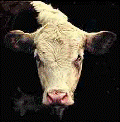Animal Science, Department of

Department of Animal Science: Dissertations, Theses, and Student Research
Date of this Version
Spring 5-2015
Document Type
Thesis
Citation
Cleveland, B. C. (2015). Effects of Feeding Distillers Grains Throughout Different Phases of Production on Shelf Life of Ground Beef. Masters. Thesis. University of Nebraska-Lincoln, Lincoln, NE.
Abstract
These studies analyzed the effects of feeding distillers grains on the shelf life of cooked and raw ground beef, and how the addition of postmortem or dietary antioxidants impact shelf life.
For study one, cattle were assigned to backgrounding diets containing low or high concentrations of wet distillers grains (WDGS) and either corn gluten feed or modified wet distillers grains (MDGS) during finishing. For study two, cattle were fed one of five finishing diets; corn, wet distillers grains (WDGS), WDGS + vitamin E, WDGS + Ethoxyquin/TBHQ, or WDGS + vitamin E + Ethoxyquin/TBHQ.
Shoulder clods from each dietary treatment were ground and lean, fat, and composite samples were taken for fatty acid analysis. Patties were overwrapped for retail display and analyzed for lipid oxidation, discoloration and objective color. Cooked beef links were manufactured with salt and phosphate. Links from the first study contained different concentrations of rosemary and green tea extract. Beef was stuffed into links, cooked, and lipid oxidation was measured throughout refrigerated or frozen storage.
For study one, there were no differences in lipid oxidation of patties, yet ground beef from heifers finished with MDGS discolored faster than beef from cattle finished on corn gluten feed. Increased lipid oxidation in beef links occurred when cattle were fed distillers grains during backgrounding or finishing but antioxidants reduced lipid oxidation similarly regardless of concentration.
For study two, ground beef patties showed no dietary differences for instrumental color, only increased percent discoloration over time. All ground beef TBARS increased over time, and supplementation of vitamin E resulted in lower TBARS values than corn after 2 d of retail display. An increase in PUFA and C18:2 was observed in lean and composite fatty acids in WDGS versus corn-finished cattle.
Both dietary and postmortem antioxidants were effective at extending shelf life in ground beef from cattle fed distillers grains. Additionally, the effect of feeding distillers grains on shelf life varies depending on when distillers grains was supplemented.
Advisor: Gary A. Sullivan


Comments
A THESIS Presented to the Faculty of The Graduate College at the University of Nebraska In Partial Fulfillment of Requirements For the Degree of Master of Science, Major: Animal Science, Under the Supervision of Professor Gary A. Sullivan. Lincoln, Nebraska: May 2015
Copyright (c) 2015 Brandy Danielle Cleveland